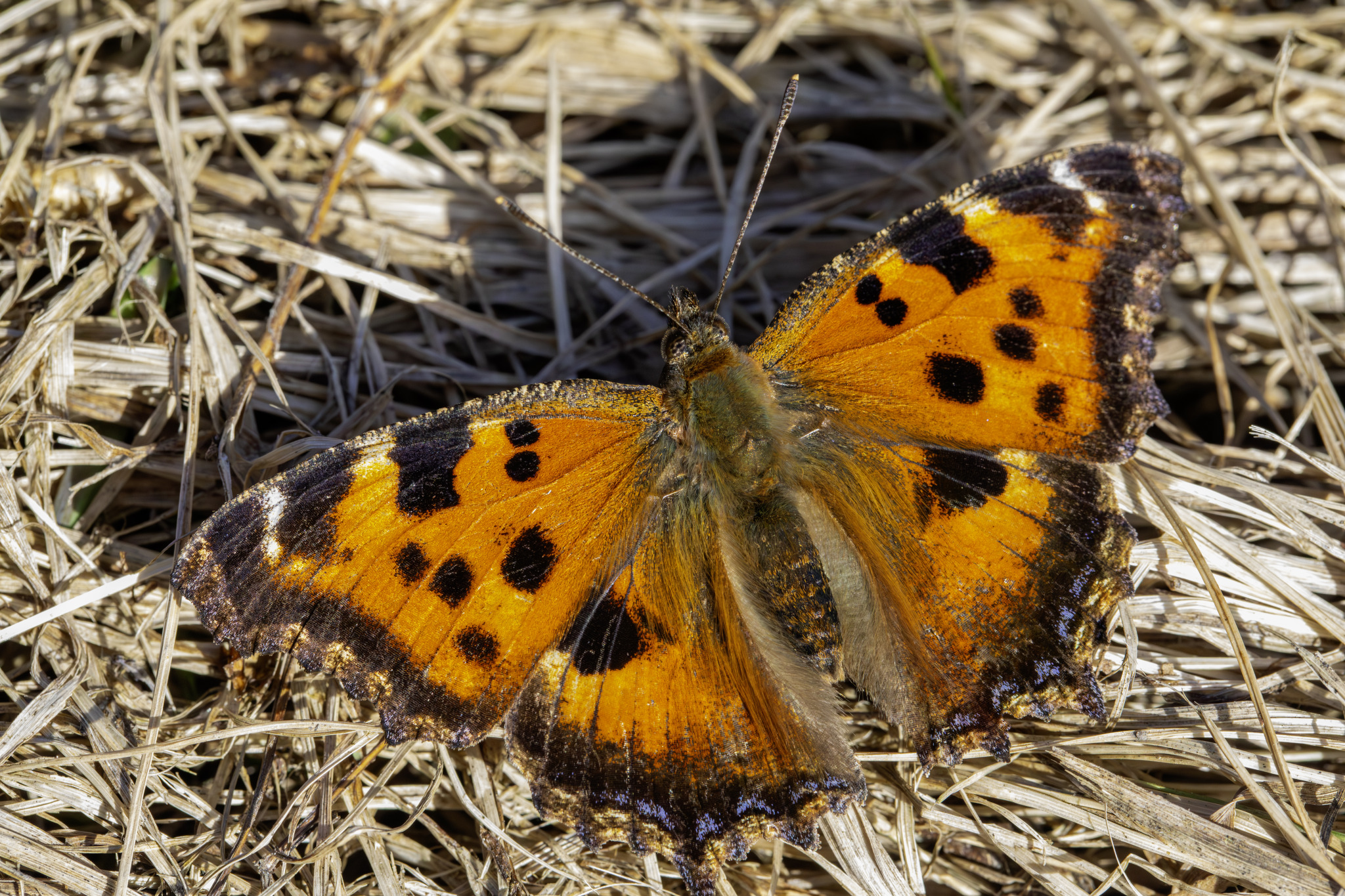The Scarce Tortoiseshell (Nymphalis xanthomelas), also known as the Yellow-legged Tortoiseshell, is a striking butterfly in the Nymphalidae family. Despite its name, this species is not always scarce, and population numbers can fluctuate significantly depending on environmental conditions. It is known for its vibrant orange wings and dark borders, making it a visually striking member of temperate ecosystems.
Physical Description
- Wingspan:
- 62–72 mm, larger than the similar Small Tortoiseshell (Aglais urticae).
- Coloration:
- Upperwings: Bright orange with black spots and a broad, dark brown margin containing blue lunules.
- Undersides: Mottled brown and gray, providing excellent camouflage when at rest.
- Legs:
- Distinctly yellowish, giving rise to its alternate common name.
Behavior
- Flight:
- Strong and purposeful, often seen basking on sunny surfaces or flying in search of nectar.
- Feeding:
- Adults feed on nectar from flowers like thistles, dandelions, and buddleia.
- In late summer, they consume tree sap and overripe fruits to store energy for hibernation.
- Hibernation:
- Overwinters as an adult, hiding in tree crevices, buildings, or dense vegetation.
Habitat
- Found in a variety of temperate habitats, including:
- Woodland edges and clearings.
- Meadows and grasslands.
- River valleys and urban gardens.
- Prefers areas with abundant nectar sources and host plants.
Life Cycle
- Eggs:
- Laid in clusters on host plants, primarily willow (Salix spp.) and elm (Ulmus spp.).
- Larvae:
- Black with white speckles and spiny projections, feeding in groups before dispersing.
- Pupae:
- Chrysalis is suspended from vegetation and has a mottled brown and gold appearance.
- Adults:
- Emerge in summer, live through autumn, and overwinter to reproduce in spring.
Distribution
- Native to Europe, Asia, and parts of temperate Siberia.
- Populations are most stable in eastern Europe and Asia, with occasional westward irruptions.
- Rare and localized in western Europe but seen as a vagrant or during population explosions.
Conservation Status
- Stable to Declining:
- Populations are affected by habitat loss, climate change, and the decline of host plants.
- Conservation efforts include preserving wetlands and woodlands, especially those with willow and elm trees.
Ecological Role
- Pollination:
- Feeds on nectar and contributes to pollination.
- Prey:
- Larvae and adults serve as prey for birds, mammals, and predatory insects.
Interesting Facts
- Migration and Irruptions:
- Known for occasional population explosions, leading to large migrations into new areas.
- Confusion with Relatives:
- Easily mistaken for the Small Tortoiseshell but is larger and lacks the black-and-white striped antennae.
- Adaptability:
- Can utilize urban areas for overwintering, adapting to changing landscapes.
Summary
The Scarce Tortoiseshell (Nymphalis xanthomelas) is a remarkable butterfly whose presence often signals healthy willow and elm populations. Its vivid orange wings and unique migration behavior make it a fascinating species for butterfly enthusiasts. Conservation of its habitats is essential to support its dynamic populations and preserve this colorful ambassador of temperate ecosystems.
Views: 1341
Subscribe to the newsletter:
